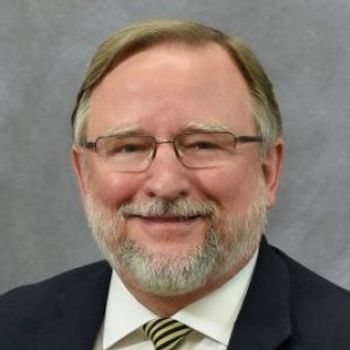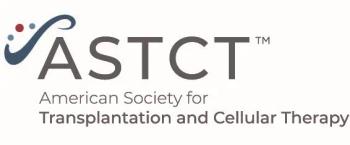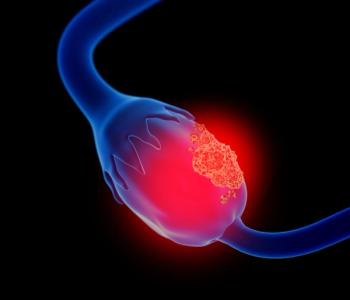![According to John Henson, MD, “What we need are better treatments to control the [brain] tumor once it’s detected.”](https://cdn.sanity.io/images/0vv8moc6/cancernetwork/e0d29c38bb732429ae370e4ef7d1829a10c96446-2992x1684.png?w=350&fit=crop&auto=format)
Teclistamab is Feasible for Select Elderly Patients with Multiple Myeloma
CRS and ICANS occurrence were comparable for patients with relapsed/refractory multiple myeloma 75 years and older vs those younger than 75.
Teclistamab-cqyv (Tecvayli) showed favorable safety and efficacy outcomes in elderly patients with relapsed/refractory multiple myeloma, suggesting that it can be administered in select patients 75 years and older, and that functional status and comorbidities should be considered when treating this patient population, according to findings from a real-world multicenter study published in Blood Cancer Journal.1
Efficacy data revealed that no significant difference in objective response rate (ORR) was observed among efficacy-evaluable patients 75 years and older (n = 83) vs those younger than 75 (n = 302), with respective rates of 62% vs 53% (P = .17). The very good partial response rate (VGPR) was 53% vs 44% in respective groups (P = .14). At a median follow-up of 8.7 months (95% CI, 7.6-9.9) and 10.4 months (95% CI, 9.9-11.2) in patients treated with teclistamab 75 and older vs younger than 75, respectively, the unadjusted progression-free survival (PFS) was 10.7 months (95% CI, 6.6-not reached [NR]) vs 5.2 months (95% CI, 3.7-7.4).
Additionally, the median overall survival (OS) in the 75 and older group was not reached (95% CI, NR-NR) and the younger than 75 group was 16.1 months (95% CI, 14.0-NR), with respective 1-year OS rates of 73% (95% CI, 63%-84%) vs 59% (95% CI, 54%-66%). Additionally, in the multivariate analysis, being 75 years or older was not significantly associated with PFS (HR, 1.15; 95% CI, 0.72-1.84; P = .55) or OS (HR, 1.67; 95% CI, 0.84-3.33; P = .15).
“In this large, real-world multicenter study, we observed favorable safety and efficacy outcomes in elderly patients [with relapsed/refractory multiple myeloma] who received [teclistamab]. Rates of cytokine release syndrome [CRS] and immune effector cell-associated neurotoxicity syndrome [ICANS], as well as ORR and PFS, were comparable with those seen in the younger age group, as well as those seen in the pivotal phase 1/2 MajesTEC-1 clinical trial [NCT04557098, NCT03145181],” principal investigator Oren Pasvolsky, MD, hematologic oncologist of the Department of Lymphoma-Myeloma in the Division of Cancer Medicine at MD Anderson Cancer Center, wrote in the publication with study coinvestigators.
“Our results suggest that teclistamab can be safely administered in select patients [75 years and older], and advanced age should not be the sole reason to preclude treatment. Instead, careful patient selection, based on functional status and comorbidities, should be employed to expand access to this important anti-myeloma modality.”
The retrospective multicenter study was conducted across all consecutive patients treated for multiple myeloma across 13 US academic medical centers participating in the United States Multiple Myeloma Immunotherapy Consortium. The selected cohort of 385 patients with relapsed/refractory multiple myeloma had the age of 75 chosen based on its previous use in the MajesTEC-1 trial.
The median age was 78 years (range, 75-92) vs 65 years (range, 31-74) in the 75 and older vs younger than 75 years groups, 52% vs 46% were females (P = .35), 78% vs 63% were White (P = .0086), and 29% vs 24% had an ECOG performance status score of 2 or greater (P = .37). Additionally, in respective groups, 73% vs 80% were not MajesTEC-1 eligible (P = .20), 86% vs 89% had a baseline creatinine clearance of 30 ml/min or greater (P = .59), and 55% vs 42% had standard-risk cytogenetics (P = .0301). Ultra high-risk myeloma was observed in 12% vs 24% of respective arms (P = .0233).
A total of 52% of the 75 and older group and 59% of the younger than 75 group were treated with at least 6 lines of prior therapy (P = .22). Additionally, 77% and 30% of the 75 and older group was triple- or penta-class refractory, respectively, vs 85% and 39% of the younger than 75 group (P = .06, .15). Furthermore, 57% vs 28% of respective arms received prior autologous transplant (P <.0001) and 68% vs 45% received prior anti-BCMA agents (P = .0003).
An accelerated step-up dosing regimen was used in 62% of the 75 years and older group vs 58% of the younger than 75 group. No significant differences in the rate of any-grade CRS (P = .27) or grade 2 to 4 CRS (P = .74) among each age group were observed. Additionally, no significant differences existed between both groups for any-grade ICANS (P = .12).
Reference
Pasvolsky O, Dima D, Feng F, et al. Outcomes of elderly patients with relapsed refractory multiple myeloma (RRMM) treated with teclistamab: a multicenter study from the U.S. Multiple Myeloma Immunotherapy Consortium. Blood Cancer J. 2025;15:92. doi:10.1038/s41408-025-01297-7
Newsletter
Stay up to date on recent advances in the multidisciplinary approach to cancer.





















































































